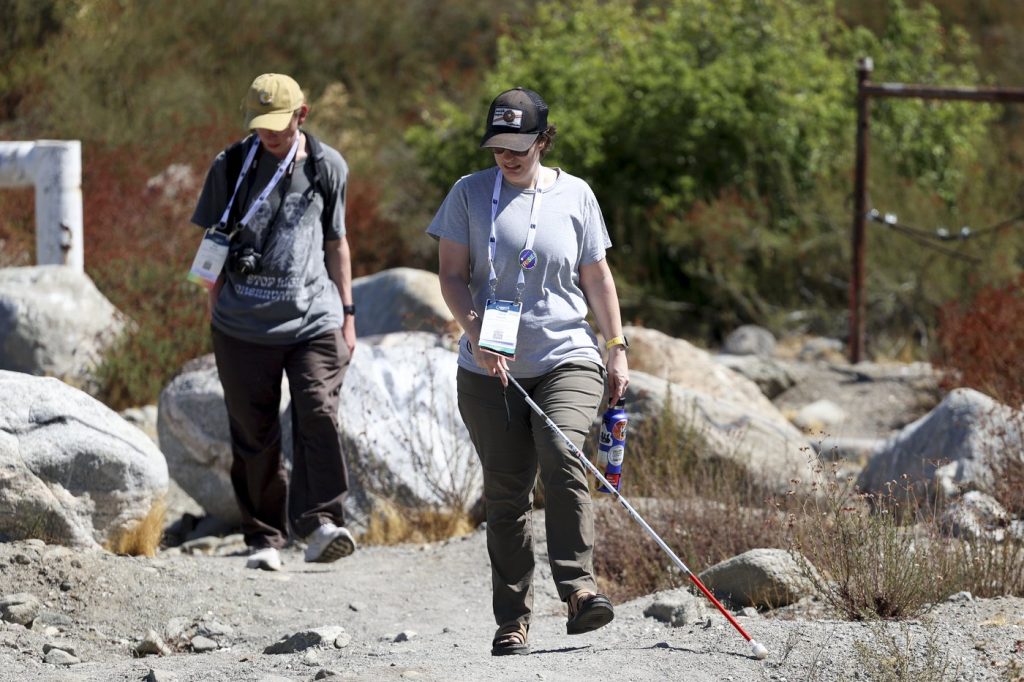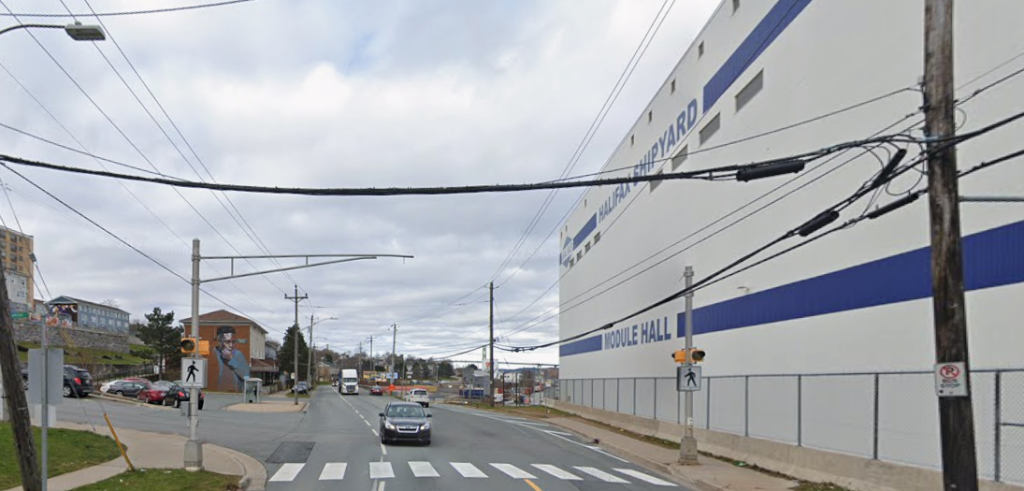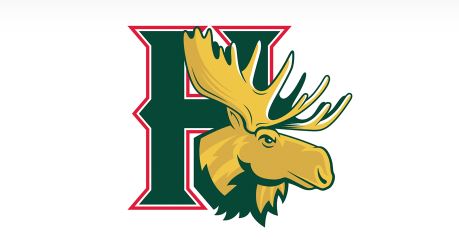How scientists with disabilities are making research labs and fieldwork more accessible

Posted Jan 18, 2025 08:11:48 AM.
Last Updated Jan 18, 2025 08:15:16 AM.
SAN BERNARDINO, Calif. (AP) — The path to Lost Lake was steep and unpaved, lined with sharp rocks and holes.
A group of scientists and students gingerly made their way, using canes or a helping hand to guide them. For those who couldn’t make the trek, a drone brought the lake — blue and narrow — into view.
The field trip was designed to illustrate the challenges disabled researchers often face and how barriers can be overcome.
“Just because you can’t do it like someone else doesn’t mean you can’t do it,” said Anita Marshall, a University of Florida geologist leading the outing. The group included scientists with sight, hearing and mobility disabilities.
Marshall’s organization ran the field trip to the lake along the San Andreas Fault, outside of San Bernadino. Her group — the International Association for Geoscience Diversity — and others are working to improve access to field and lab work so that those with disabilities feel welcome and stay.
Taormina Lepore, a Western Michigan University paleontologist who went on the trip, said scientists tend to value a single, traditional way of getting things done.
At Lost Lake, everyone got a view — even if they couldn’t physically get there.
“It’s really about empathy, as much as it is about science,” said Lepore, who also researches science education.
Making research labs more accessible
Disabled people make up about 3% of the science, technology, engineering and math workforce, according to 2021 data from the National Science Foundation.
Scientists with disabilities say that’s in part because labs, classrooms and field sites aren’t designed to accommodate them. Students and faculty are still told that they can’t work in a lab or do research safely, said Mark Leddy, who formerly managed disability-related grants for the National Science Foundation.
The Americans with Disabilities Act, passed in 1990, sets minimum regulations for new buildings and labs, including ramps and wheelchair-accessible walkways.
But modifying older labs can be a complicated and lengthy process.
Alyssa Paparella is working on her doctorate in biology at Baylor College of Medicine and founded an online community for disabled scientists. She said a science building at one of her former schools had no automatic buttons to open doors.
“What is that saying about who you want actually working in the laboratories?” she said. “That’s the front door that they’re not even able to get in.”
Leddy said researchers with disabilities are invaluable because of their life experiences. They have to constantly come up with creative ways to get past barriers in their lives — a problem-solving skill that’s indispensable in a lab.
“If they don’t feel welcome, if they don’t get access, then how can they contribute that talent?” Leddy said.
Venu Varanasi, a biomaterials engineer at the University of Texas at Arlington who has low vision, prints out signage using high-contrast color combinations and encourages his students to keep floors and counters clutter-free so he can navigate the lab more easily.
He said those modifications also keep accidents to a minimum for non-disabled students.
“When you realize that you have a person with a disability, you have an opportunity, not a problem,” he said.
At Purdue University in Indiana, engineering professor Brad Duerstock helped design an accessible biomedical lab years ago with support from the school and a National Institutes of Health grant, removing cabinets under sinks and fume hoods so that wheelchairs can easily pull up.
The cost of making a lab more accessible varies depending on how extensive the changes are, Duerstock said. Some schools set aside money for improvements and science organizations can offer grants.
Accessibility in the outdoors
On the California geology field trip, the group explored the lake carved into the landscape by the San Andreas Fault, where the grating of two tectonic plates can cause earthquakes.
The group included rock enthusiasts at all different stages of their careers. A handful were students. Others were professors, eager to explore the outdoors in a group they could trust to look after them.
Central Connecticut State University professor Jennifer Piatek, who uses a wheelchair, saw the lake through drone footage and used a pocket lens to examine rocks brought back by other participants.
She said it was nice to be part of a community that anticipated her needs. For example, their bus pulled forward to park at a flatter location to make it easier for her to get off.
You can learn a lot from images and maps, “but really you need to get to the space to be in it,” said Piatek, who studies planetary geology.
Lepore, a neurodivergent person with low vision, scanned rocks using an artificial intelligence app that described their color and shape out loud.
“Nature is not inherently accessible,” she said. “Nature just doesn’t have ramps and the kinds of things that we might wish it had. But there are so many workarounds and ways that we as geoscientists can make things truly open.”
Bushra Hussaini uses tips from the field trips to support interns and volunteers with disabilities at New York’s American Museum of Natural History, where she works. She said the supportive community of geologists is what keeps her coming back. “We learn from each other and we help each other,” she said.
Before heading out, Marshall urged the participants to ask for a hand or a shoulder to lean on if needed. She and others from the organization have been leading field trips every year as an offshoot from the Geological Society of America’s annual meeting.
As a doctoral student, Marshall would go on field trips with her peers only to wait back in the van, frustrated, because the organizers hadn’t thought about how to accommodate her disabilities.
She wants things to be different for the next generation of scientists.
“The whole point of these little day trips is to just plant that seed out there,” Marshall said, “that there’s another way forward.”
___
AP video journalist Eugene Garcia contributed to this report.
___
The Associated Press Health and Science Department receives support from the Howard Hughes Medical Institute’s Science and Educational Media Group and the Robert Wood Johnson Foundation. The AP is solely responsible for all content.
Adithi Ramakrishnan, The Associated Press








